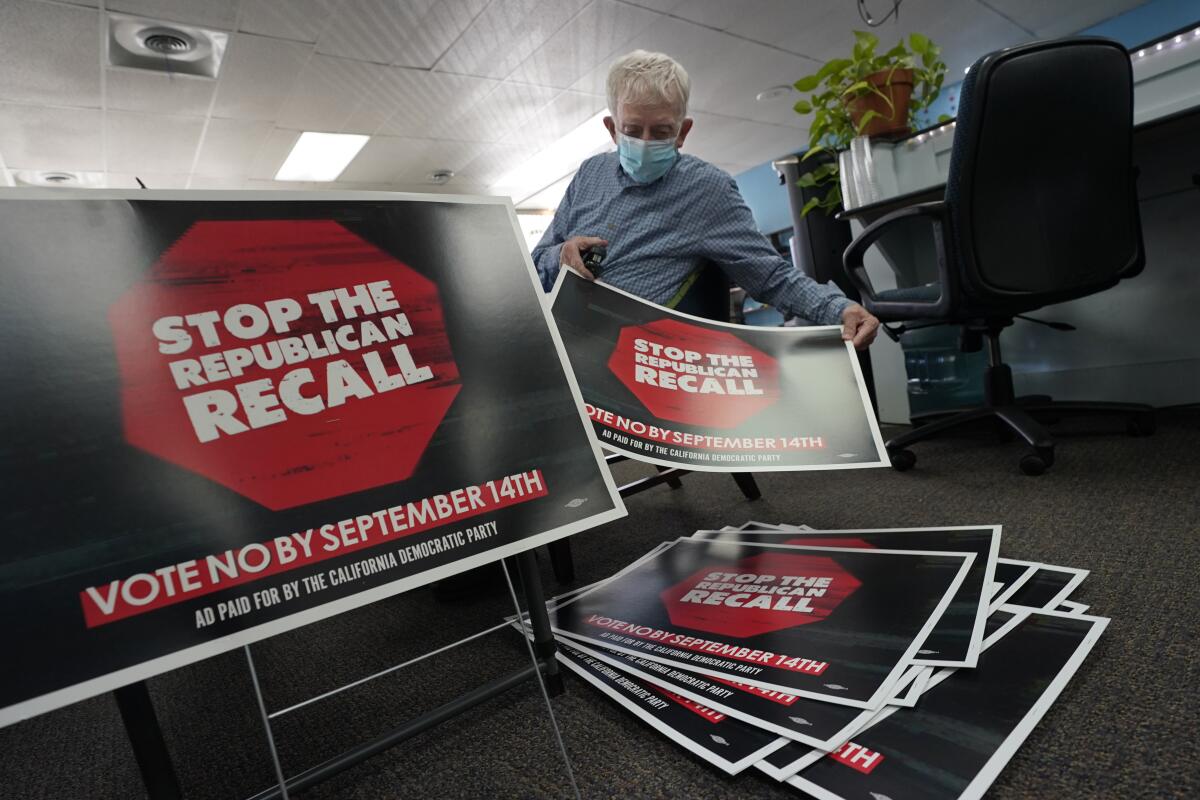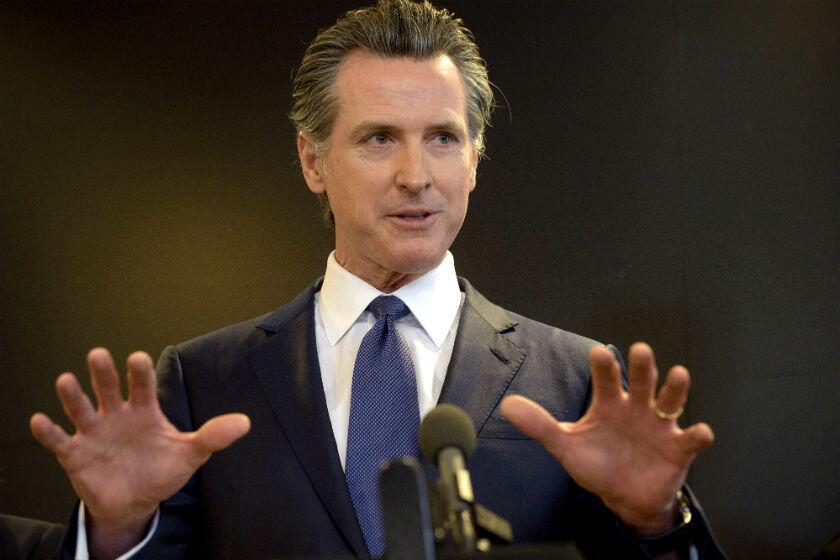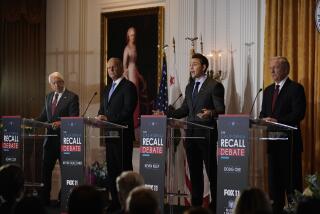Editorial: California still hasn’t fixed its undemocratic recall rules

- Share via
A fringe conservative group has launched yet another recall targeting Gov. Gavin Newsom for — well, for the same reasons as the six times before. If history is any guide, the petition drive will fizzle out long before it gathers the more than 1.3 million valid signatures required by the 160-day deadline.
That’s what happened in the previous recall attempts against the governor during his first term, including the last one that resulted in a special election in 2021. That time recall supporters got lucky when a judge granted them more time to collect signatures because of COVID-19 closures, and they were able to capitalize on a moment when people were scared and angry. The recall election still failed, probably because it was motivated by Newsom’s liberal policies, which a majority of Californians favor.
This seventh recall attempt is a good thing in one sense: It is a reminder that California’s legislators have yet to fix the most glaringly undemocratic aspect of the state’s recall rules, which is that the governor and other statewide elected officers can be replaced by someone who gets fewer votes on the same ballot.
Republicans involved in the 2021 Newsom recall effort are trying again. The seventh attempt to end his governorship is a waste of time and potentially a lot of taxpayer money.
The problem is the state’s use of two-question recall ballots. The first question is whether to remove the officeholder. The second question asks voters to pick a replacement from a list of candidates, which cannot include the ousted official. The recall target must get a majority of votes to stay in office. But the winner of question two does not need to earn a majority of votes — just more votes than any of the other candidates. This sets up the very real possibility that a sitting governor could be replaced by someone with far less voter support. That is not how democracy is supposed to work.
There’s a fix, but it requires voter approval. Lawmakers should get cracking to pass SCA-1, a constitutional amendment, by June to get it on the November ballot. The bill by Sen. Josh Newman (D-Fullerton), who was a recall target in 2018, was approved by the state Senate in February, and is now before the Assembly. It needs the support of two-thirds of legislators and the governor to pass.
California must fix the gravest flaw in our recall system: that a winner can prevail with a small sliver of the vote.
The proposal would remove the second question from the recall ballot, making it a simple yes or no question. If a majority of voters say yes to recalling the governor, the lieutenant governor would fill the seat as soon as the recall election is certified. If the successful recall occurs within the first two years of the regular term, it would trigger a special election for a replacement (the ousted governor would be allowed to run in that race). If it happens later in the term, the lieutenant governor would serve until the next regular election.
This makes sense. The second in command’s primary function is to fill in if the governor is unable to perform gubernatorial duties for whatever reason.
If the attorney general, secretary of state or other statewide officer were recalled, the governor would appoint someone to fill the job until the next election or call for a special election. That’s the same way those positions would be filled if they were vacated for other reasons.
As sensible as it is, the bill stalled last year, though it seems that wasn’t due to political reasons. In fact, the only formal opposition comes from a conservative conspiracy group that pushes baseless voter fraud claims. More likely is that the bill lost momentum and more immediate issues took priority.
It was a mistake to wait. Now, with another Newsom recall effort underway, the bill could be portrayed as politically motivated. So be it. In the current political environment, when recalls are launched left and right and often for no good reason, there’s never going to be a perfect moment.
No more procrastinating. It’s time to give voters the opportunity to fix this undemocratic recall rule.
More to Read
A cure for the common opinion
Get thought-provoking perspectives with our weekly newsletter.
You may occasionally receive promotional content from the Los Angeles Times.











